The reef diving in the Francis Drake Channel area is very extensive. The dive
at the Indians is not to be missed as well as Rainbow Reef and Painted
Walls . Each sight has its own character, and as is my custom, I prefer the
dive crew to pick the sights based on weather conditions and experience.
Visibility at all sights were never less than 60 feet with some sights having
80+ feet viz. Water temps were in the high 70's but my hooded vest was worn
under my 5 mm wetsuit for all dives since we were averaging about an hour per
dive.
Overall I would have to say the reefs that we visited were very healthy, with
no sign of abuse, overfishing, or bleaching. The National Park fees assessed to
dive certain areas were modest and were apparently well spent on multiple secure
moorings at each sight. Although there was an apparent lack of the 'big
stuff' like sharks and rays, we were blessed with several sightings of
smaller, but equally interesting critters.
We happened to locate two sailfin blennies in separate unattached pieces of
coral and when placed in close proximity, the show they put on for us lasted
almost 15 minutes. With sails out fully, they took turns posturing and chasing
each other in and out of the holes they called home. We finally had to separate
them as we laughed through our regs and their behavior. We also sighted several
male Jawfish (complete with a mouthful of eggs). A black spotted nudibranch was
also spotted and duly photographed and captured on video.
RMS Rhone This wreck is probably one of the most famous wrecks in the
Caribbean and has SO MUCH life on it. She sank in 1867 when she was pounded onto
a sharp rock during a hurricane. Almost everyone on board died.
The wreck of the Beata which is a tug boat sunk intentionally, where
you'll probably see sting rays as they feed on the garden eels living in the
sand.
Facts about Tortola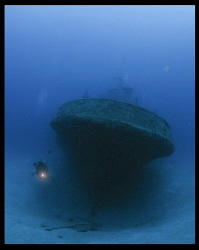
by
Juan TorresThe Wreck of the Beata at Wreck Alley in the British Virgin Islands.
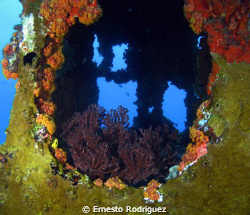
by
Ernesto RodriguezWIT SHOAL shipwreck ST Thomas
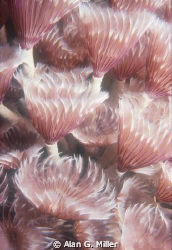
by
Alan G. MillerFeatherduster worms, shot on Kodachrome 64 with a Nikonos V 35 mm and macro tube for 1:2
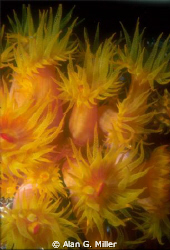
by
Alan G. MillerOrange cup coral, a night dive in the BVI. Nikonos V, 35 mm with 1:2 extension tube, SB 105, shot on Kodachrome 64
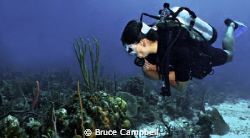
by
Bruce CampbellLu was viewing all of the corals and sponges as I took this shot.
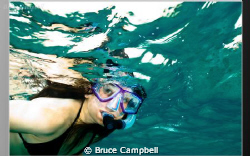
by
Bruce CampbellSnorkeling before committing to the dive.